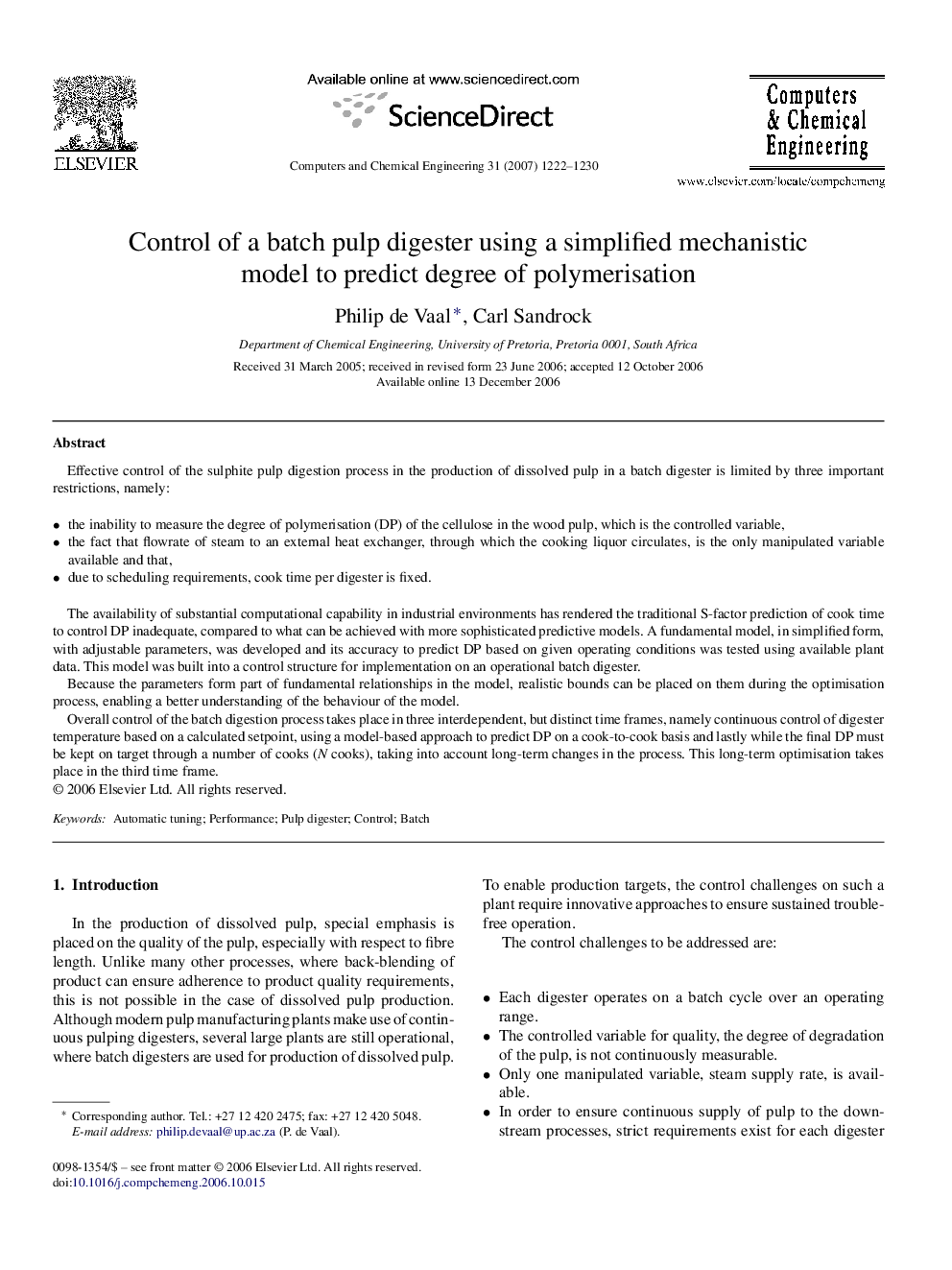| Article ID | Journal | Published Year | Pages | File Type |
|---|---|---|---|---|
| 174137 | Computers & Chemical Engineering | 2007 | 9 Pages |
Effective control of the sulphite pulp digestion process in the production of dissolved pulp in a batch digester is limited by three important restrictions, namely:•the inability to measure the degree of polymerisation (DP) of the cellulose in the wood pulp, which is the controlled variable,•the fact that flowrate of steam to an external heat exchanger, through which the cooking liquor circulates, is the only manipulated variable available and that,•due to scheduling requirements, cook time per digester is fixed.The availability of substantial computational capability in industrial environments has rendered the traditional S-factor prediction of cook time to control DP inadequate, compared to what can be achieved with more sophisticated predictive models. A fundamental model, in simplified form, with adjustable parameters, was developed and its accuracy to predict DP based on given operating conditions was tested using available plant data. This model was built into a control structure for implementation on an operational batch digester.Because the parameters form part of fundamental relationships in the model, realistic bounds can be placed on them during the optimisation process, enabling a better understanding of the behaviour of the model.Overall control of the batch digestion process takes place in three interdependent, but distinct time frames, namely continuous control of digester temperature based on a calculated setpoint, using a model-based approach to predict DP on a cook-to-cook basis and lastly while the final DP must be kept on target through a number of cooks (N cooks), taking into account long-term changes in the process. This long-term optimisation takes place in the third time frame.
